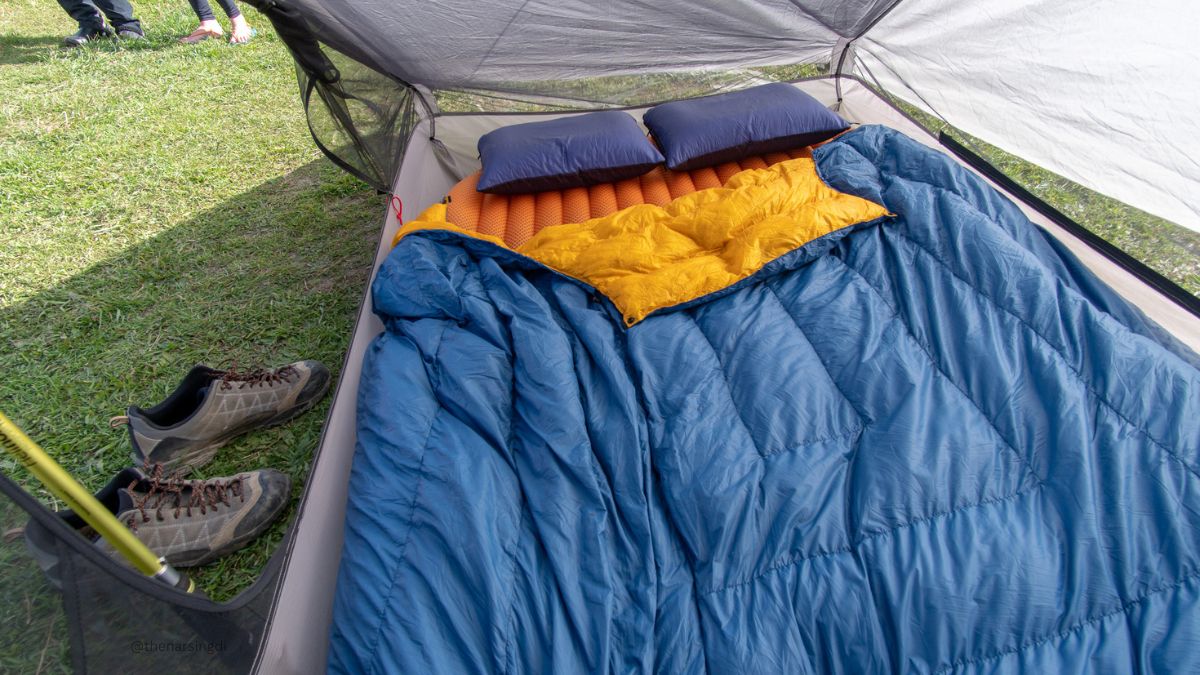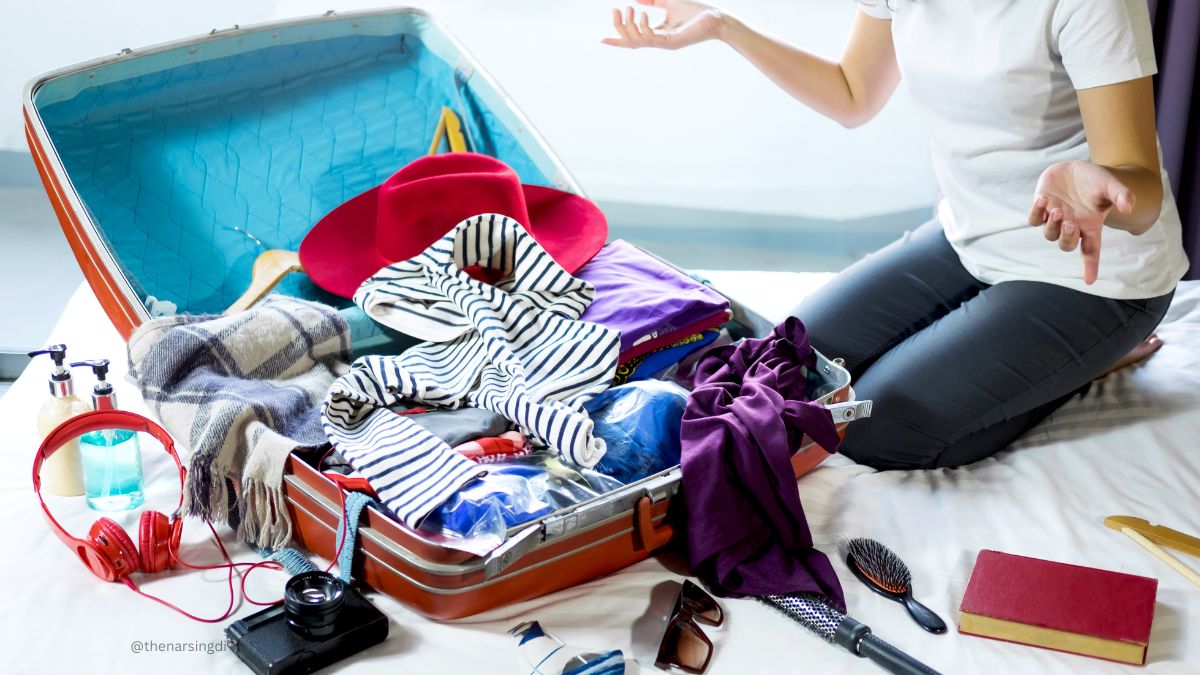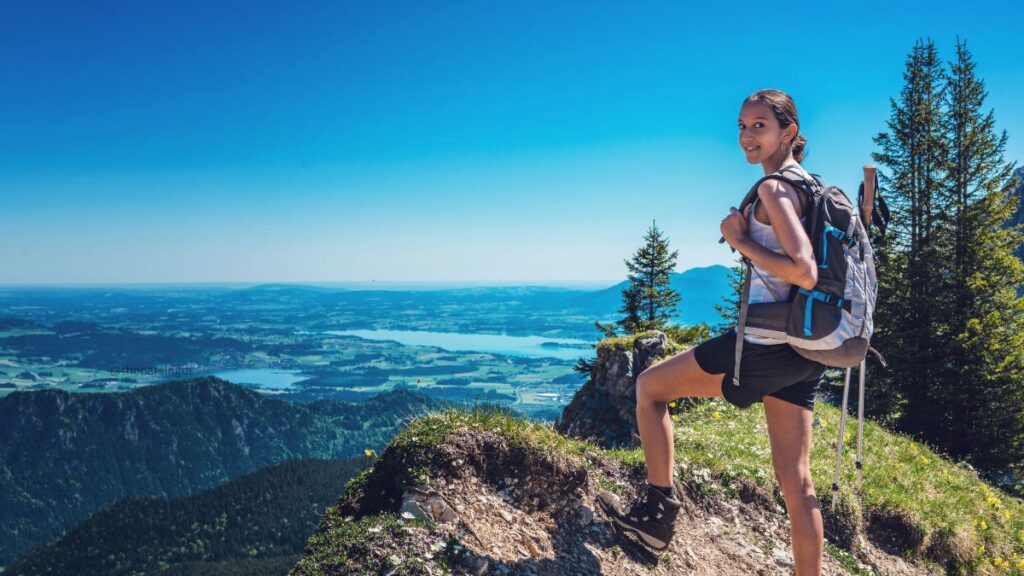For women, packing for such a journey requires a careful balance of essentials and comfort, ensuring that you’re prepared for whatever the trail might throw your way, without being weighed down by unnecessary items.
In this guide, we’ll cover backpacking packing list female, from the must-have gear and clothing to the little things that can make your trip more enjoyable.
Join us to hit the trails with confidence, knowing that you’re fully prepared for the journey ahead!
Backpacking Packing List Female:
TOC
Packing for such an adventure can be challenging, especially for women who need to balance practicality, comfort, and safety. The key is to pack efficiently, bringing along only what’s backpacking packing list female for whatever the trail may throw at you:
1. Backpack

- Size: Choose a backpack that fits well and is appropriate for the length of your trip, typically between 40-60 liters for multi-day hikes.
- Fit: Look for adjustable torso length, padded shoulder straps, and a supportive hip belt to distribute weight evenly.
- Features: Consider a load with simple access pockets, a hydration repository sleeve, and an underlying precipitation cover.
2. Shelter and Sleeping Gear

- Tent: Opt for a lightweight, compact tent, either a one-person or two-person model depending on your space needs.
- Sleeping Bag: Select a sleeping bag with a temperature rating suitable for the conditions, with women-specific designs offering better insulation.
- Sleeping Pad: A lightweight, inflatable sleeping pad provides comfort and insulation from the ground.
- Pillow: Bring an inflatable or compressible pillow for added comfort during the night.
4. Clothing

- Base Layers: Pack moisture-wicking tops and bottoms to stay dry and comfortable.
- Insulating Layer: A fleece or down jacket for warmth during chilly nights.
- Outer Layer: A waterproof and windproof coat and jeans to safeguard against the components.
- Hiking Pants/Shorts: Durable, quick-drying options for daytime activities.
- Socks: Merino wool or synthetic socks to wick moisture and prevent blisters.
- Footwear: Sturdy, broken-in hiking boots or trail shoes, with lightweight camp shoes for evenings.
- Hat: A sun hat for daytime protection and a warm beanie for cold mornings.
- Gloves and Buff/Scarf: Lightweight gloves and a versatile buff or scarf for warmth.
- Underwear: Moisture-wicking, quick-drying underwear designed for active wear.
5. Personal Care Items
- Toiletries: Incorporate a movement measured toothbrush, toothpaste, biodegradable cleanser, and other fundamental cleanliness things.
- Ladylike Cleanliness: Pack feminine items like tampons, cushions, or a feminine cup, alongside ziplock sacks for tactful removal.
- Sunscreen and Lip Balm: High SPF sunscreen and SPF lip balm for protection against UV rays.
- First Aid Kit: Carry band-aids, blister treatment, pain relievers, antiseptic wipes, and any necessary prescription medications.
- Insect Repellent: Choose a repellent effective against mosquitoes and ticks.
- Hand Sanitizer and Wipes: For maintaining hygiene on the trail.
- Hair Care: A little brush or brush, alongside clasps or a handkerchief.
5. Gear and Tools
- Hydration System: A hydration reservoir or water bottles, along with a water filter or purification tablets to ensure safe drinking water.
- Cooking Gear: A lightweight stove, fuel, cooking pot, and utensils, plus a lighter or waterproof matches.
- Food: Pack lightweight, high-calorie options like dehydrated meals, energy bars, nuts, and dried fruits.
- Multi-tool or Knife: Useful for various tasks, from food preparation to gear repair.
- Navigation Tools: Bring a map, compass, or GPS device, and ensure you know how to use them.
- Headlamp: A headlamp with extra batteries for hands-free lighting.
- Trekking Poles: Discretionary however supportive for strength on lopsided territory.
- Bear Canister: If you’re camping in bear country, use a bear canister for safe food storage.
6. Miscellaneous Essentials
- Towel: A speedy drying, packable towel for washing or getting dry.
- Journal and Pen: For documenting your journey and reflecting on your experiences.
- Camera or Smartphone: To capture memories, with protective gear for your device.
- Trash Bags: Essential for packing out all waste, adhering to leave-no-trace principles.
Tips for Packing Smart:
- Minimize Bulk: Opt for lightweight, multi-purpose items to keep your pack manageable.
- Organize Your Gear: Use packing cubes or stuff sacks to keep everything organized and accessible.
- Layer Your Clothing: Layering allows you to adjust to varying weather conditions without overpacking.
Packing effectively for a backpacking trip is all about being prepared without overloading your pack. By focusing on the essentials and making smart choices, you’ll be ready to take on your adventure with confidence and comfort.
Related: 10 Backpacking Equipment For Beginners
FAQs:
Q. What size backpack is best for a multi-day exploring trip?
A rucksack with a limit of 40-60 liters is for the most part great for multi-roadtrips. This size offers ample space for all your essentials while remaining manageable and not too heavy.
Q. What type of clothing should I pack for a backpacking adventure?
Pack lightweight, moisture-wicking layers, including a base layer, an insulating layer (like fleece or down), and a waterproof outer layer. Also, bring durable hiking pants, quick-drying underwear, and a sun hat for protection.
Q. How can I keep my backpack light while ensuring I have everything I need?
Focus on packing multi-functional items, such as a jacket that serves both as insulation and a rain barrier. Stick to the essentials, choose travel-sized toiletries, and use packing cubes to organize and maximize space.
Q. What individual consideration things are unquestionable requirements for ladies on a hiking trip?
Essential personal care items include biodegradable soap, a compact toothbrush and toothpaste, menstrual products, sunscreen, SPF lip balm, insect repellent, and a small first aid kit.
Q. What explicit stuff do I want for resting while at the same time hiking?
You’ll need a lightweight, compact tent, a sleeping bag rated for the expected temperatures, and an inflatable or foam sleeping pad for comfort and insulation. An inflatable pillow can also enhance your sleeping experience on the trail.

Its Aliza R. Khan, a passionate travel blogger from Bangladesh. With a knack for inspecting hidden gems and sharing travel tips, I love to inspires readers to explore the world with curiosity and adventure.



